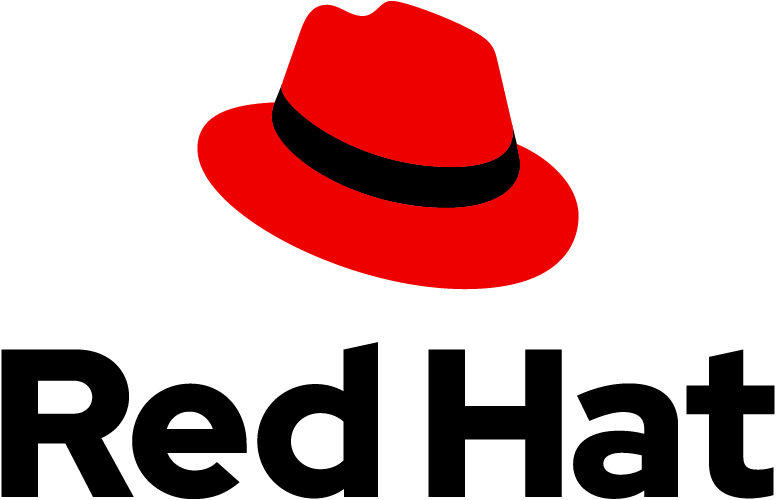
Overview
Built on the Red Hat Enterprise Linux operating system (OS), Red Hat Enterprise Linux for SAP expands existing capabilities so you can get the most out of SAP's powerful analytics and data management portfolio. Red Hat Enterprise Linux High Availability (HA) provides all the necessary packages for configuring pacemaker based cluster that provides reliability and availability for critical production services. Extended Update Support (E4S) provides support on specific minor releases for 4 years from General Availability. Red Hat Insights can now be deployed for users with existing, cloud marketplace-purchased Red Hat Enterprise Linux (RHEL) system managed by Red Hat Update Infrastructure (RHUI).
Highlights
- High Availability solutions for S/4HANA, SAP HANA, and SAP Business Applications and 4 years Extended Update Support (E4S) from General Availability
- SAP specific technical components to support S/4HANA, SAP HANA, and SAP Business Applications
- Red Hat Enterprise Linux for SAP with HA and Update Services' cost is 0.10 $/hour for a small Instance type (.06 in infrastructure costs and .04 in software cost). and 0.225 $/hour for a large instance type (.13 in infrastructure costs and 0.095 in software cost). For information about reserved instance pricing, refer to this URL: https://aws.amazon.com/ec2/pricing/reserved-instances/pricing/
Details
Introducing multi-product solutions
You can now purchase comprehensive solutions tailored to use cases and industries.

Features and programs
Buyer guide

Financing for AWS Marketplace purchases

Pricing
- ...
Dimension | Cost/hour |
|---|---|
m7i.large Recommended | $0.016 |
m6in.large | $0.016 |
c6id.large | $0.016 |
u-9tb1.metal | $0.00 |
c5.4xlarge | $0.087 |
c6a.8xlarge | $0.174 |
c6i.xlarge | $0.032 |
m6a.24xlarge | $0.00 |
c6a.large | $0.016 |
i3en.3xlarge | $0.065 |
Vendor refund policy
We do not currently support refunds, but you can cancel at any time.
How can we make this page better?

Legal
Vendor terms and conditions
Content disclaimer
Delivery details
64-bit (x86) Amazon Machine Image (AMI)
Amazon Machine Image (AMI)
An AMI is a virtual image that provides the information required to launch an instance. Amazon EC2 (Elastic Compute Cloud) instances are virtual servers on which you can run your applications and workloads, offering varying combinations of CPU, memory, storage, and networking resources. You can launch as many instances from as many different AMIs as you need.
Version release notes
Latest Updates
Additional details
Usage instructions
To connect to the operating system, use SSH and the username ec2-user. All application controls are available via the command line by typing "commands /help".
Resources
Support
Vendor support
Getting Started
AWS infrastructure support
AWS Support is a one-on-one, fast-response support channel that is staffed 24x7x365 with experienced and technical support engineers. The service helps customers of all sizes and technical abilities to successfully utilize the products and features provided by Amazon Web Services.



Standard contract
Customer reviews
Hybrid cloud platform has simplified internal banking apps while supporting regulated environments
What is our primary use case?
The main use cases for Red Hat Enterprise Linux (RHEL) at the bank involve internal applications, as we do a lot of internal applications not exposed to clients.
What is most valuable?
From my perspective, the best features of Red Hat Enterprise Linux (RHEL) lie in its ease of use, especially compared to AIX, which has a lot of functionalities requiring extensive learning. It was easy for me to shift from AIX to Red Hat Enterprise Linux (RHEL).
Red Hat Enterprise Linux (RHEL) helps manage our hybrid cloud environment, but being a bank, we are highly regulated internally, so there is limited direct involvement with the cloud environment in Royal Bank cloud, which is Azure .
What needs improvement?
One area I see for improvement in Red Hat Enterprise Linux (RHEL) is in the documentation. I encountered some scarcity when looking for information regarding structure, commands, and administrative tasks.
For how long have I used the solution?
I have dealt with Red Hat Enterprise Linux (RHEL) for around 10 years, even when it was not part of IBM.
What do I think about the scalability of the solution?
My opinion of Red Hat Enterprise Linux (RHEL)'s scalability is that it was very easy.
How are customer service and support?
I would rate Red Hat's customer service or technical support as a 10, as my experience with all IBM products, including Red Hat Enterprise Linux (RHEL), has been very satisfactory all the time.
How would you rate customer service and support?
Positive
How was the initial setup?
The initial setup of Red Hat Enterprise Linux (RHEL) is straightforward compared to AIX, which is more convoluted.
What other advice do I have?
I have experience with platforms like Linux, and I am also working deeply with MongoDB and Node.js, tools that I use constantly every single day.
I am familiar with Red Hat Enterprise Linux (RHEL), and here in RBC, we are a big IBM shop, currently using JBoss and Red Hat Enterprise Linux (RHEL) as part of our environment.
Red Hat Enterprise Linux (RHEL) is used for both cloud-based solutions and on-premises.
From a business value perspective, the business folks do not notice much difference between Red Hat Enterprise Linux (RHEL) and other distributions, as long as their application functions well, they are satisfied.
We utilize two cloud providers for Red Hat Enterprise Linux (RHEL) solutions, mainly Azure and also Amazon. I cannot answer how Red Hat Enterprise Linux (RHEL) was purchased, but I know we have it on both Amazon and Azure.
I would rate Red Hat Enterprise Linux (RHEL) a nine, as I find it satisfactory in various aspects.
Redhat Enterprise Linux has all the bells and whistles one could ask for.
Stable, Secure, Yet Pricey with Setup Challenges
Enterprise platform has supported secure consulting services and complex data center operations
What is our primary use case?
My principal focus in using Red Hat Enterprise Linux (RHEL) currently is as an integrator in Linux, where I have many services in consulting, deployment, installation, and troubleshooting in Linux. I have a recovery system, deployment clusters, databases, and work in any environment in data centers. At this moment, I am a senior consultant in the data center in open source.
What is most valuable?
The best features of Red Hat Enterprise Linux (RHEL) depend on the client because the client can decide to use RHEL, not me. The principal thing is the support for the clients because many clients are corporate and have a need for enterprise support. It's the principal focus and is different from using Ubuntu or Debian or any other Linux.
Other good things about Red Hat Enterprise Linux (RHEL) include the focus on system patching, upgrades, and security. The security advisories and authorization are very strong in Red Hat, and that is the principal focus—security.
I manage Red Hat Enterprise Linux (RHEL) by provisioning patching, new deployments, automation, and anything else needed.
I am satisfied with the management experience of Red Hat Enterprise Linux (RHEL) and find it satisfactory for this purpose.
What needs improvement?
I would rate customer service or tech support with Red Hat Enterprise Linux (RHEL) a seven, no more.
I give it a seven because of the time it takes for responding to problems; it takes too long.
For management, it is medium; it is not easy, it is a medium level.
I see a medium ROI with Red Hat Enterprise Linux (RHEL) because it has a high price. OpenShift may provide better ROI, but OpenShift is very high.
The initial setup of Red Hat Enterprise Linux (RHEL) is complex.
On a scale of one to ten, I rate it a five—medium complex.
A very expensive time is needed for deploying clouds with Red Hat Enterprise Linux (RHEL).
It takes a lot of time.
In many cases, Red Hat Enterprise Linux (RHEL) does not help me save time because the principal problem is that in AWS , Red Hat Linux is not the natural Linux for deployment; the default deployment in Amazon is Amazon Linux , not Red Hat Linux.
In many cases, it does not depend on direct Red Hat support for saving time.
My thoughts on the knowledge base with Red Hat Enterprise Linux (RHEL) are that it is good but it does not have it all because I have the medium and plus; it needs more knowledge base.
For how long have I used the solution?
I have been using this for 20 years.
What do I think about the scalability of the solution?
Red Hat Enterprise Linux (RHEL) has high scalability; it is high for horizontal scalability in any environment, and there are many solutions for scalability.
How are customer service and support?
I would rate customer service or tech support with Red Hat Enterprise Linux (RHEL) a seven, no more.
I give it a seven because of the time it takes for responding to problems; it takes too long.
How was the initial setup?
The initial setup of Red Hat Enterprise Linux (RHEL) is complex.
On a scale of one to ten, I rate it a five—medium complex.
What was our ROI?
I see a medium ROI with Red Hat Enterprise Linux (RHEL) because it has a high price. OpenShift may provide better ROI, but OpenShift is very high.
Red Hat Enterprise Linux (RHEL) is less expensive than OpenShift, which is very expensive.
What other advice do I have?
I am a reseller and a partner with Red Hat.
I am involved with Red Hat.
I use Red Hat Enterprise Linux (RHEL) for my labs, so I am a reseller, partner, and user. I would rate this review overall as an eight.
Which deployment model are you using for this solution?
If public cloud, private cloud, or hybrid cloud, which cloud provider do you use?
Improved cloud backups and security have transformed how our team builds and manages servers
What is our primary use case?
Red Hat Enterprise Linux (RHEL) is used primarily to build AWS servers. A specific example of how RHEL is used to build AWS servers involves purchasing licenses from third-party vendors like REL and also from AWS. Once an AMI is obtained from the Marketplace, the AMI is customized by injecting all organization standards.
After internal tools have been built on the AMI, that AMI is used to build AWS servers.
How has it helped my organization?
Red Hat Enterprise Linux (RHEL) has positively impacted the organization by helping track everything, such as how many users have access to the server, which is easy to monitor. RHEL also offers better options for downloading repositories easily, and the ability to stripe the EBS volumes has allowed for pulling more IOPS and throughput.
The impact on the team and organization has been significant, as it has helped improve application performance and backup performance. Since AWS backend is used for backups, RHEL striping has proven very useful.
By using RHEL striping, throughput and IOPS have increased, which reduced the backup completion time from fifteen to sixteen hours to just fifteen to sixteen minutes. The main reason is the backend and the striping implemented for EC2 instances.
What is most valuable?
Red Hat Enterprise Linux (RHEL) offers several valuable features, including being secure and standard, and making whatever commands are executed easier to manage. When security and standardization are considered, no other person can access those RHEL servers.
Another good aspect is that whatever is downloaded comes from the repository, and every command is tracked, including the person who entered the command. Tracking on RHEL AMIs and OS standardization is very effective.
Red Hat Enterprise Linux (RHEL) helps mitigate downtime and lower risks by using the Pacemaker role for high availability. The primary and secondary systems are managed by the Pacemaker role, which helps reduce downtime for applications.
What needs improvement?
Red Hat Enterprise Linux (RHEL) could be improved by including a better app stream module experience or simply phasing out modules in favor of straightforward version repos. Red Hat could also integrate more common tools directly or integrate EPEL more seamlessly. Additionally, enabling AI-based operational tuning for kernel parameters, file system parameters, and network stack optimization could enhance the experience.
Regarding needed improvements, simplifying the subscription and licensing would help reduce complexity in subscription management. Clear visibility of consumption and unused subscriptions and compliance is also important.
For how long have I used the solution?
Seven years of experience have been accumulated in the current field.
What do I think about the stability of the solution?
Red Hat Enterprise Linux (RHEL) is stable.
What do I think about the scalability of the solution?
Red Hat Enterprise Linux (RHEL) offers great scalability and supports very large memory.
How are customer service and support?
The customer support received is good.
How would you rate customer service and support?
Positive
Which solution did I use previously and why did I switch?
Red Hat Enterprise Linux (RHEL) has been the only solution used, and no switch from any other solution has occurred.
In comparing the business value of RHEL to other Linux distributions, no other Linux distributions have been used; only Red Hat Enterprise Linux (RHEL) has been utilized.
How was the initial setup?
Red Hat Enterprise Linux (RHEL) systems are managed with a dedicated cloud support team that handles provisioning and monthly patching. Additionally, focus is placed on security hardening and optimizing it with cloud-init, instance tuning, and subscription activation.
What about the implementation team?
Image Builder has been used, but the AMIs are not built personally. A dedicated support team handles the building of the AMIs.
What was our ROI?
A return on investment has been seen, as it has saved a tremendous amount of time.
Red Hat Enterprise Linux (RHEL) helps save time; for example, the Pacemaker role facilitates faster task completion, and it optimizes backup processes.
What's my experience with pricing, setup cost, and licensing?
Regarding pricing, setup cost, and licensing, the pricing is good; however, licensing is a bit confusing.
What other advice do I have?
My advice for others looking into using Red Hat Enterprise Linux (RHEL) is to be aware that subscriptions can be challenging to manage. When a server reboots, the subscription goes to open, which can lead to others consuming the subscription, creating a challenge regarding the subscription and licensing part.
Security requirements were a significant consideration in choosing RHEL in the cloud because it is not open source and is highly secure.
Red Hat Enterprise Linux (RHEL) is assessed as having a better knowledge base offered through its tuning capabilities. By better tuning, the documentation is referred to, which helps in day-to-day work.
Red Hat Enterprise Linux (RHEL) entitlement management can be confusing, as converting systems between subscription modes is not straightforward.
I would rate this review a nine out of ten.